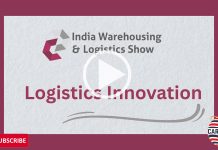Establishing SEZs with modern cold storage and logistics infrastructure in areas can centralise resources and streamline operations. Integrating advanced technologies such as IoT for real-time monitoring and blockchain for supply chain transparency can optimise operations, enhancing tracking and reducing losses.
Imagine biting into a crisp apple or enjoying a fresh salad miles away from the farm where it was harvested. Behind this everyday miracle lies a complex and delicate dance known as the cold chain—a seamless series of refrigerated production, storage, and distribution activities that keep perishables fresh and safe. However, this intricate system is fraught with challenges. From inadequate infrastructure and lack of cold storage facilities to insufficient refrigerated transport and inefficient networks, the cold chain faces many pain points.
Let us delve into some innovative solutions to these problems and explore how recent initiatives in India and Canada are set to revolutionise the sector.
So, what are some of the pain points?
Infrastructure development
One of the primary challenges in the cold chain sector is the lack of infrastructure. This can be addressed through PPP mode. Such partnerships can create a solid foundation for the cold chain, ensuring that essential infrastructure is available and efficiently utilised. Establishing special economic zones (SEZs) with state-of-the-art cold storage and logistics infrastructure in high-demand areas can further centralise resources and streamline operations. Integrating advanced technologies such as IoT for real-time monitoring and blockchain for supply chain transparency can optimise operations, enhancing tracking and reducing losses.
Cold storage facilities
The availability of adequate cold storage facilities is critical for the cold chain. Deploying mobile cold storage units in regions with high agricultural output, but limited storage facilities can address storage bottlenecks and minimise spoilage. Investing in renewable energy solutions, such as solar-powered cold storage units, can lower operational costs and promote sustainability. These portable and eco-friendly solutions can ensure remote areas have access to reliable cold storage, thereby preserving the quality of perishable products.
Refrigerated transport
Refrigerated transport is a vital component of the cold chain that requires attention. Upgrading existing transport fleets with modern, energy-efficient refrigerated trucks can improve the efficiency of perishables transport. Establishing dedicated cold chain logistics corridors can ensure fast and reliable transport, reducing transit times and preserving product quality. These corridors can facilitate faster movement of goods, thereby maintaining the integrity of the cold chain.
Efficient transport networks
An efficient transport network is vital for the smooth operation of the cold chain. Developing centralised logistics platforms that connect farmers, distributors, and retailers can streamline operations, improve coordination, and reduce delays. Enhanced road and rail linkage is equally important, as investing in infrastructure improvements can ensure smoother and faster transit. This integrated approach can reduce the time and cost involved in moving perishable goods from one point to another, maintaining their quality throughout the journey.
Training and education
Finally, training and education are essential for ensuring the cold chain operates effectively. Initiating skill development programmes for workers in the sector can enhance their ability to handle perishables, ensuring better management and reduced waste. Conducting awareness campaigns for stakeholders about best practices in cold chain management can promote adherence to standards and improve overall efficiency. By fostering a well-trained workforce and informed stakeholders, the sector can achieve reliability and sustainability.













